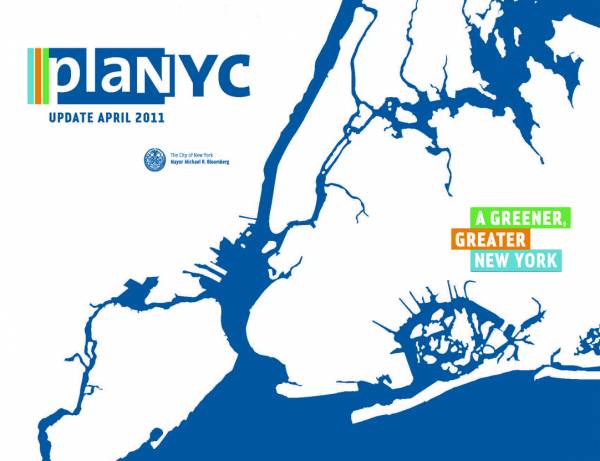In 2007, the mayor’s office released PlaNYC—a comprehensive guide for New York City that covers everything from brownfields to housing, from water supply to solid waste. It outlines the city’s goals for improving quality of life for New Yorkers, in addition to maintaining its position as the preeminent capital of global commerce. In April last year, a new plan was released for 2030. This PlaNYC is updated from the 2007 version and encompasses the new developments in population, technology, and in the economy.
In the next weeks, to better understand the scope and potential of this planning initiative, I will break PlaNYC down from the dense, 200-page report into more manageable, bite-sized pieces. But first, one might ask, why is PlaNYC necessary for the city at all? What if this huge undertaking, involving hundreds of participants, is only a waste of time and resources which could have been used to some more immediate effect? And, are they actually following the plan they have laid out for 2007?
PlaNYC has been an extensive collaboration between many government agencies, city groups, consultants, private sectors, academic experts, elected officials, and many more; but the number of participants only insured the accuracy and tenability. A city is a complex, unpredictable organism, often resistant to the best intentions, especially in such a precarious economic climate.
So, what are the realities that motivate the creation of PlaNYC?
- Growth: By 2030, New York City population is expected to be more than 9 million people. This means new ideas and new innovations for our city. It means community development and improvement. Yet, growth in places that do not have the capacity will hurt New York. We need ensure the city can support and sustain its population.
- Infrastructure: “Today, in some aspects, we are living on the limits of our inheritance.” This is certainly true. Some New York bridges are over 100 years old, and are in great need of repair. The main water pipeline has never been turned off since its completion, and our energy grid is barely up to modern demands. There are more people riding the subway now than there have been in the past 50 years. There needs to be a plan to keep the urban infrastructure safe, reliable, and convenient.
- Global Economy: With ever changing industries of the 21st century, new countries and new cities have exploded into the picture. New York wants to retain the best and the brightest so our city can continue to remain competitive in decades and centuries to come. This requires incentives for workers, such as excellent transportation systems and other cost-effective frameworks to optimize everyone’s time and money.
- Climate Change: Temperatures could raise 3°F over the next 20 years and this could mean as much as a 7°F rise in the city as compared to surrounding suburbs. Warmer weather means more public health problems, and is riskier for the more vulnerable population of the city. Also with warmer air temperatures, comes more intense weather, and our city needs to be prepared to deal with natural disasters. We also want to do our part in reducing our city’s environmental footprint.
But PlaNYC says it best: “We created PlaNYC as a bold agenda to meet these challenges and build a greener, greater New York.” Still though, can we actually impact these huge issues?
Yes.
Even in the few years since PlaNYC 2007, New York has already made progress.
- 97% of initiatives in the 2007 Plan have been launched Created or preserved 64,000 units of housing, 87% of which is transit-accessible
- More than 250,000 New Yorkers are within a 10-minute walk from a park
- Added more than 200 acres of parkland and improved existing parks.
- Committed funding to clean the waterways
- Pedestrian fatalities have decreased, largely due to more pedestrian friendly zones, such as the new Times Square Plaza
- More than 30% of NYC Taxis are “green” vehicles
- Retrofitted city-owned buildings so that their greenhouse gas emissions will be down 30% by 2017
- Overall, greenhouse gas emissions have fallen by 15% since 2005
PlaNYC is indeed a huge undertaking, but in small steps it will guide New York City, and improve the lives of millions in doing so. Stay tuned for the weekly breakdown of PlaNYC and how it will affect New Yorkers in the next years.
